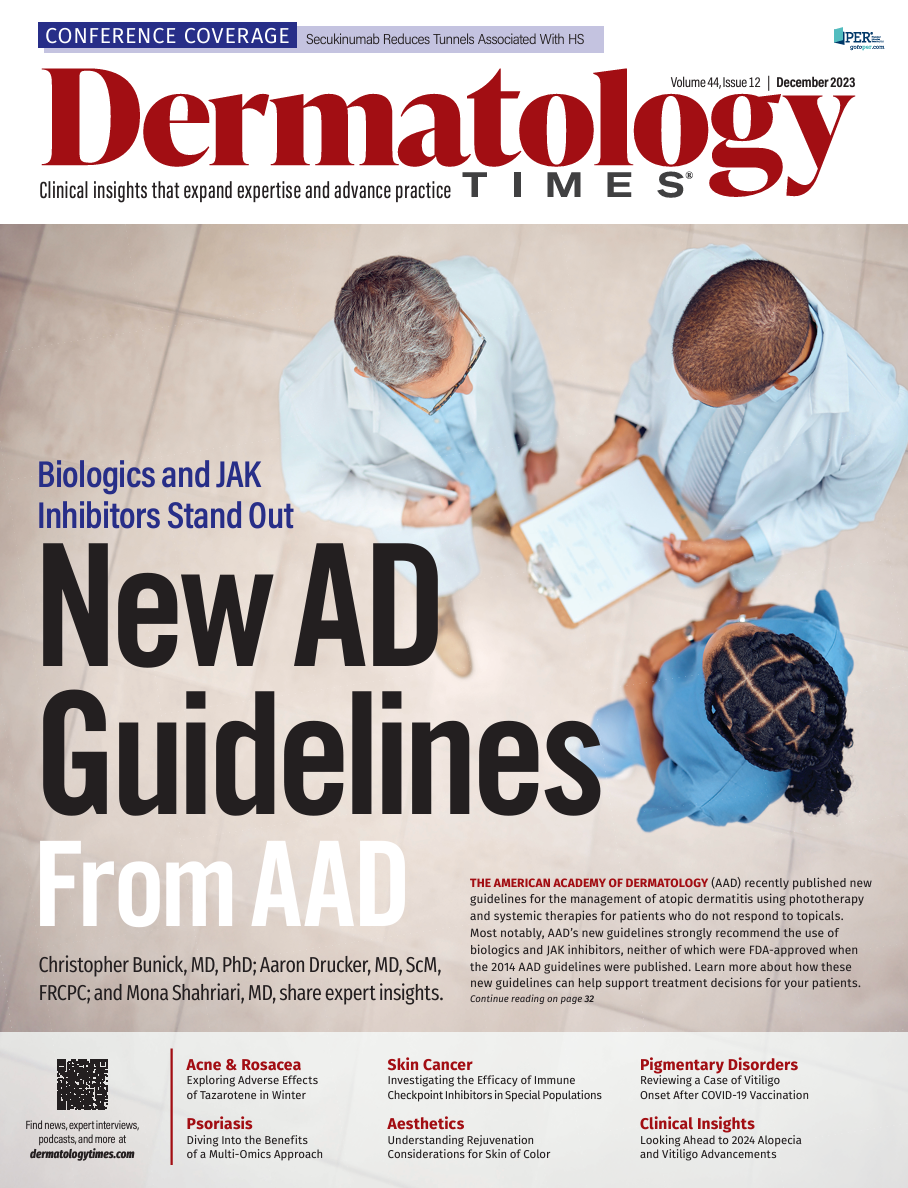- Case-Based Roundtable
- General Dermatology
- Eczema
- Chronic Hand Eczema
- Alopecia
- Aesthetics
- Vitiligo
- COVID-19
- Actinic Keratosis
- Precision Medicine and Biologics
- Rare Disease
- Wound Care
- Rosacea
- Psoriasis
- Psoriatic Arthritis
- Atopic Dermatitis
- Melasma
- NP and PA
- Skin Cancer
- Hidradenitis Suppurativa
- Drug Watch
- Pigmentary Disorders
- Acne
- Pediatric Dermatology
- Practice Management
- Prurigo Nodularis
- Buy-and-Bill
News
Article
Dermatology Times
Secukinumab Demonstrates Efficacy in Reducing Tunnels Associated With Hidradenitis Suppurativa
Author(s):
More than 80% of patients did not experience an increase in number of draining tunnels associated with HS by week 52.
Secukinumab was effective in reducing the number of hidradenitis suppurativa (HS)- associated draining tunnels in patients with moderate to severe HS, according to a poster presented at the 2023 Society of Dermatology Physician Assistants Fall Conference in Nashville, TN.1
In a post hoc pooled analysis of the SUNSHINE (NCT03713619) and SUNRISE (NCT03713632) phase 3 trials, which evaluated the safety and efficacy of the anti-interleukin (IL)-17A therapy in adult patients with moderate to severe HS, investigators sought to identify the effects of secukinumab on the number of draining tunnels present in patients. The analysis examined its effects in both the general population of patients among the studies and in patients with 1 or more draining tunnel at baseline.
Read previous Dermatology Times coverage of the SUNSHINE and SUNRISE trials here.
A total of 1,084 patients from the SUNSHINE and SUNRISE trials were included in the analysis, including 361 patients who were treated with secukinumab on a biweekly basis, 360 patients who received treatment with secukinumab every 4 weeks, and 363 patients who had been assigned to a placebo.
At baseline, 66.2% of patients receiving secukinumab every 2 weeks presented with at least 1 draining tunnel. 60.6% of patients treated with secukinumab every 4 weeks and 62.5% of patients receiving a placebo treatment presented with 1 or more draining tunnel.
In patients receiving either dosing of secukinumab, the average decrease in number of draining tunnels from baseline to week 16 of the study was greater than in patients receiving a placebo.
Average Draining Tunnels Decrease From Baseline to Week 16
- Secukinumab every 2 weeks: −1.4 ± 2.95
- Secukinumab every 4 weeks: −1.0 ± 2.79
- Placebo: −0.6 ± 2.94
Additionally, a higher proportion of patients treated with either dose of secukinumab did not experience an increase in draining tunnels from baseline to week 52. This was sustained through week 52 of the study.
“These findings suggest that in patients with moderate to severe HS, secukinumab was effective in reducing the number of draining tunnels at week 16, with the effects being sustained through week 52,” study authors wrote. “In addition, at week 52, more than 80% of patients treated with secukinumab did not experience an increase in the number of draining tunnels from baseline, which is relevant because skin tunnel formation is associated with progression of disease in HS and indicates irreversible tissue damage.”
Reference
- Bechara F, Becherel P-A, Reguiai Z, et al. Effect of secukinumab on draining tunnels in patients with moderate to severe hidradenitis suppurativa: post hoc analysis of the SUNSHINE and SUNRISE phase 3 randomized trials. Poster presented at the 2023 Society of Dermatology Physician Assistants Fall Conference, October 26-29; Nashville, TN.
Make sure to keep up to date with the latest in coverage from the conference and subscribe to Dermatology Times to receive daily email updates.







